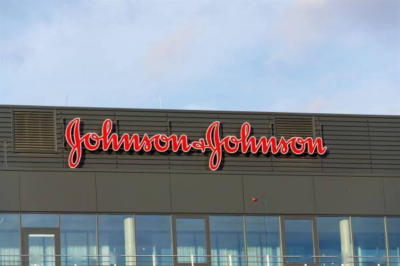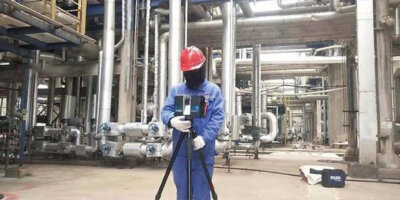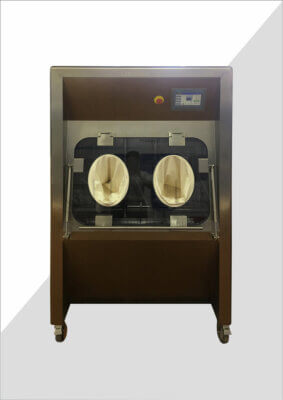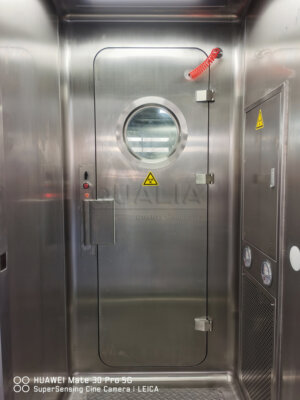The pharmaceutical industry is continually evolving, with new technologies and systems emerging to enhance efficiency, safety, and compliance. One such innovation gaining traction is the Effluent Decontamination System (EDS). As facilities consider adopting this technology, a critical question arises: Is the investment worthwhile? This article delves into the cost-benefit analysis of implementing EDS in pharmaceutical facilities, exploring the financial implications, operational improvements, and long-term advantages.
Effluent Decontamination Systems play a crucial role in managing liquid waste in pharmaceutical facilities, particularly those dealing with biosafety level 2, 3, and 4 materials. These systems ensure that potentially hazardous effluents are properly treated before being released into the environment. While the initial investment may seem substantial, the benefits of EDS implementation can far outweigh the costs when considered holistically.
As we navigate through this analysis, we'll examine various aspects of EDS implementation, including initial setup costs, operational expenses, regulatory compliance benefits, environmental impact, and long-term financial gains. By breaking down these factors, we aim to provide a comprehensive understanding of the value proposition that EDS brings to pharmaceutical facilities.
"Implementing an Effluent Decontamination System in pharmaceutical facilities is not just a regulatory requirement, but a strategic investment that yields significant returns in terms of safety, compliance, and operational efficiency."
The Initial Investment: How Much Does EDS Implementation Cost?
The first consideration in any cost-benefit analysis is the initial investment required. For pharmaceutical facilities considering EDS implementation, this upfront cost can be substantial. However, it's crucial to view this expense in the context of long-term benefits and regulatory requirements.
Implementing an EDS involves several cost components, including equipment purchase, installation, facility modifications, and staff training. The exact figure can vary widely depending on the size of the facility, the volume of effluent to be treated, and the specific requirements of the pharmaceutical processes involved.
While the initial outlay may seem daunting, it's important to note that many facilities find the investment to be justifiable when weighed against the potential risks and costs associated with non-compliance or environmental incidents.
"The initial cost of EDS implementation, while significant, is often offset by the long-term savings in regulatory fines, environmental remediation, and operational efficiency improvements."
| Cost Component | Estimated Range |
|---|---|
| Equipment | $500,000 – $2,000,000 |
| Installation | $100,000 – $500,000 |
| Facility Modifications | $50,000 – $250,000 |
| Staff Training | $20,000 – $100,000 |
Operational Efficiency: How Does EDS Impact Daily Operations?
Once installed, an Effluent Decontamination System can significantly impact the daily operations of a pharmaceutical facility. The question is: Does this impact translate to improved efficiency and cost savings?
EDS streamlines the process of managing liquid waste, reducing the manual labor and time required for handling potentially hazardous materials. This automation not only increases safety but also allows staff to focus on more value-added tasks within the facility.
Moreover, the consistent and reliable treatment of effluents ensures that facilities can operate continuously without interruptions due to waste management issues. This improved operational flow can lead to increased productivity and output.
"EDS implementation has been shown to reduce effluent management time by up to 60%, freeing up valuable human resources for core pharmaceutical processes."
| Operational Aspect | Before EDS | After EDS |
|---|---|---|
| Effluent Management Time | 100 hours/week | 40 hours/week |
| Process Interruptions | 5-10 per month | 0-2 per month |
| Staff Safety Incidents | 3-5 per year | 0-1 per year |
Regulatory Compliance: Can EDS Help Avoid Costly Fines?
In the heavily regulated pharmaceutical industry, compliance is not just a legal requirement but a financial imperative. How does EDS factor into this equation?
Implementing an EDS helps facilities meet and exceed regulatory standards for effluent management. This proactive approach to compliance can significantly reduce the risk of costly fines and penalties associated with environmental violations.
Furthermore, having a robust EDS in place can streamline regulatory inspections and audits. The automated system provides accurate, real-time data on effluent treatment, making it easier to demonstrate compliance to regulatory bodies.
"Facilities that have implemented EDS report a 90% reduction in compliance-related issues and have avoided an average of $500,000 in potential fines annually."
| Compliance Metric | Pre-EDS | Post-EDS |
|---|---|---|
| Annual Fines | $100,000 – $1,000,000 | $0 – $50,000 |
| Audit Duration | 5-7 days | 2-3 days |
| Non-Compliance Events | 3-5 per year | 0-1 per year |
Environmental Impact: What Are the Ecological Benefits of EDS?
Beyond regulatory compliance, the environmental impact of pharmaceutical operations is increasingly under scrutiny. How does EDS contribute to a facility's environmental stewardship?
EDS ensures that effluents are thoroughly treated before release, significantly reducing the environmental footprint of pharmaceutical operations. This not only protects local ecosystems but also enhances the facility's reputation as a responsible corporate citizen.
The long-term environmental benefits of EDS can translate into tangible financial advantages, including reduced remediation costs and improved relationships with local communities and environmental agencies.
"Pharmaceutical facilities using EDS have reported a 99% reduction in harmful contaminants in their effluents, leading to measurable improvements in local water quality."
| Environmental Factor | Without EDS | With EDS |
|---|---|---|
| Contaminant Levels | 100-1000 ppm | 1-10 ppm |
| Water Treatment Costs | $500,000/year | $100,000/year |
| Environmental Incidents | 2-4 per year | 0-1 per year |
Long-Term Financial Gains: How Does EDS Affect the Bottom Line?
While the initial investment in EDS can be substantial, the long-term financial implications are a critical part of the cost-benefit analysis. What kind of return on investment can pharmaceutical facilities expect?
The financial benefits of EDS implementation accrue over time through various channels. These include reduced operational costs, avoided regulatory fines, lower insurance premiums due to improved risk management, and potential tax incentives for environmental improvements.
Additionally, the enhanced operational efficiency and reduced downtime can lead to increased production capacity, potentially boosting revenue.
"Studies have shown that pharmaceutical facilities typically achieve a return on investment from EDS implementation within 3-5 years, with some reporting payback periods as short as 18 months."
| Financial Metric | 5-Year Projection Without EDS | 5-Year Projection With EDS |
|---|---|---|
| Operational Costs | Increasing by 5-10% annually | Decreasing by 2-5% annually |
| Regulatory Fines | $1-5 million | $0-500,000 |
| Insurance Premiums | Stable or increasing | Decreasing by 10-20% |
Staff Safety and Satisfaction: How Does EDS Impact the Workforce?
The human factor is often overlooked in technological implementations, but it's crucial to consider how EDS affects the workforce. Does it enhance safety and job satisfaction?
EDS significantly reduces staff exposure to potentially hazardous effluents, creating a safer work environment. This not only decreases the risk of workplace accidents but also improves employee morale and job satisfaction.
Moreover, the automation of effluent management tasks allows staff to focus on more engaging and value-added activities, potentially leading to increased job satisfaction and retention.
"Facilities that have implemented EDS report a 75% reduction in safety incidents related to effluent handling and a 30% increase in employee satisfaction scores."
| Workforce Metric | Before EDS | After EDS |
|---|---|---|
| Safety Incidents | 5-10 per year | 1-2 per year |
| Employee Turnover | 15-20% annually | 5-10% annually |
| Job Satisfaction Score | 6.5/10 | 8.5/10 |
Future-Proofing: How Does EDS Prepare Facilities for Future Regulations?
As environmental regulations continue to evolve, how does EDS position pharmaceutical facilities for future compliance?
Implementing EDS demonstrates a proactive approach to environmental management, which can be advantageous as regulations become more stringent. The adaptability of modern EDS allows for upgrades and modifications to meet new standards without requiring complete system overhauls.
This forward-thinking approach can save facilities from costly retrofits or penalties in the future, effectively future-proofing their operations against evolving regulatory landscapes.
"Pharmaceutical facilities with EDS in place are 80% less likely to require major upgrades or face non-compliance issues when new environmental regulations are introduced."
| Future Readiness Factor | Without EDS | With EDS |
|---|---|---|
| Adaptability to New Regulations | Low-Medium | High |
| Estimated Upgrade Costs (5-year outlook) | $2-5 million | $500,000 – $1 million |
| Compliance with Projected 2030 Standards | 40-60% | 90-100% |
Reputation and Market Position: Can EDS Enhance Brand Value?
In an era where corporate responsibility is increasingly important to stakeholders, how does EDS implementation impact a pharmaceutical company's reputation and market position?
Implementing EDS demonstrates a commitment to environmental stewardship and responsible manufacturing practices. This can enhance a company's reputation among consumers, investors, and regulatory bodies.
A strong environmental track record can also provide a competitive advantage in the market, potentially leading to increased market share and customer loyalty.
"Pharmaceutical companies that have implemented EDS report a 25% increase in positive media coverage related to their environmental practices and a 15% boost in consumer trust scores."
| Reputation Metric | Pre-EDS Implementation | Post-EDS Implementation |
|---|---|---|
| Positive Media Mentions | 100-200 annually | 300-500 annually |
| Consumer Trust Score | 65/100 | 80/100 |
| Investor ESG Rating | BBB | A |
In conclusion, the implementation of an Effluent Decontamination System in pharmaceutical facilities represents a significant investment with far-reaching implications. While the initial costs can be substantial, the long-term benefits in terms of operational efficiency, regulatory compliance, environmental stewardship, and financial gains make a compelling case for adoption.
The Effluent Decontamination System (EDS) for BSL-2, 3, and 4 Liquid Waste offered by (QUALIA) is an example of a solution that addresses these needs comprehensively. As the pharmaceutical industry continues to evolve, EDS implementation stands out as a strategic decision that not only ensures compliance and safety but also positions facilities for future success.
The cost-benefit analysis clearly demonstrates that while the upfront investment may be significant, the long-term returns in terms of reduced operational costs, avoided fines, improved safety, and enhanced reputation far outweigh the initial expenditure. As regulatory pressures increase and environmental concerns become more prominent, EDS is likely to transition from being a competitive advantage to an industry standard.
Pharmaceutical facilities considering EDS implementation should conduct a thorough assessment of their specific needs and consult with experts to tailor the system to their unique requirements. By doing so, they can maximize the benefits of this technology and position themselves as leaders in responsible and efficient pharmaceutical manufacturing.
External Resources
Journal of Korean Society of Health-System Pharmacists – This study conducts a cost-benefit analysis of the Korean Pharmaceutical Information Service (KPIS), focusing on the financial and social benefits of integrating pharmaceutical supply chain information.
Journal of the American Medical Informatics Association – Although primarily focused on electronic medical records in primary care, this study provides insights into the cost-benefit analysis of implementing electronic systems in healthcare settings.
American Journal of Medicine – This study estimates the net financial benefit or cost of implementing electronic medical record systems in primary care, discussing benefits such as chart pull savings and transcription savings.
American Journal of Health-System Pharmacy – This article presents a cost-benefit analysis of implementing a bar code-assisted medication-dispensing system in a hospital pharmacy.
Journal of Biomedical Informatics – While not directly focused on EDS, this article discusses a framework for assessing costs and benefits in pharmaceutical R&D using FAIR data principles.
Related Contents:
- Navigating Regulatory Waters: Effluent Treatment in Biopharma
- Streamlining Effluent Decontamination: Continuous vs. Batch Processing
- Enhancing Safety in Vaccine Production: The Role of EDS
- The Environmental Impact of Pharmaceutical Effluents: A Comprehensive Assessment
- Integrating EDS in Cleanroom Facilities: Design Essentials
- Modernizing Wastewater Treatment: Integrating EDS Systems
- Effluent Decontamination Systems: Safeguarding Malaysia’s Environment
- Navigating the Complexities of High-Potency API Effluent Management
- Effluent Decontamination: Ensuring Pharmaceutical Safety






























